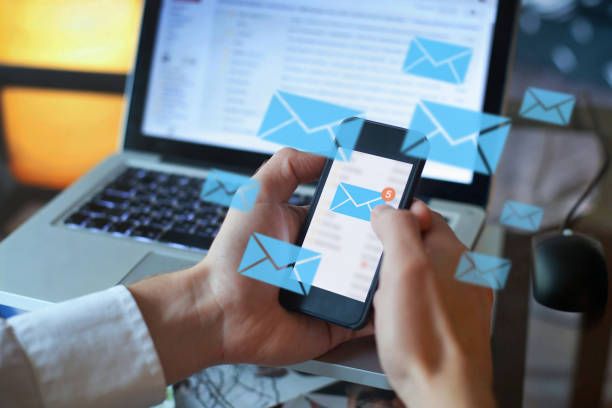In the competitive landscape of email marketing, standing out from the crowd is essential to capturing your audience's attention and driving engagement. A well-designed email can make all the difference, enticing recipients to open, read, and take action. In this comprehensive guide, we'll explore the art of email marketing design. From the fundamental principles to the latest trends, we'll equip you with the knowledge and expertise to create visually stunning emails that leave a lasting impression. Join us as we delve into the world of email design and unlock the potential of your email marketing campaigns.
Understanding the Power of Email Design

Email design goes beyond aesthetics; it directly impacts the effectiveness of your email campaigns. Here's why it matters:
a. Visual Appeal: Eye-catching designs grab attention and make your emails stand out in a crowded inbox. Engaging visuals and well-structured layouts can pique curiosity and encourage recipients to explore your message further.
b. Brand Consistency: Email design provides an opportunity to reinforce your brand identity and establish a cohesive visual experience across all touchpoints. Consistent branding builds trust and familiarity with your audience.
c. User Experience: Well-designed emails optimize the user experience by ensuring readability, easy navigation, and clear calls to action. A seamless user experience increases the likelihood of recipients engaging with your content.
Best Practices for Email Design

To create impactful emails, it's important to follow best practices that enhance the effectiveness of your design. Consider the following tips:
a. Keep It Simple: Simplicity is key in email design. Avoid cluttered layouts and overwhelming visuals. Focus on a clear hierarchy, concise copy, and strategically placed elements that guide the reader's attention.
b. Mobile Responsiveness: With the majority of emails being opened on mobile devices, it's crucial to design for mobile responsiveness. Optimize your emails to adapt seamlessly to different screen sizes, ensuring a consistent experience across devices.
c. Clear Call to Action: The purpose of your email should be evident through a clear and compelling call to action. Use contrasting colors, concise copy, and persuasive language to drive recipients to take the desired action.
d. Consistent Branding: Maintain brand consistency by incorporating your logo, color palette, and typography into your email design. Consistent branding builds recognition and strengthens the association between your emails and your brand.
e. A/B Testing: Experiment with different design elements, such as subject lines, visuals, and layouts, through A/B testing. This allows you to gather data-driven insights and refine your design strategies for optimal results.

Exploring Email Design Trends

Staying current with email design trends can help your campaigns stay fresh and engaging. Consider incorporating the following trends:
a. Minimalism: Minimalist design focuses on clean layouts, ample white space, and subtle use of color. This trend promotes clarity and emphasizes the core message of your email.
b. Bold Typography: Typography can be a powerful visual element in email design. Explore bold and expressive fonts to create impact and highlight key messages.
c. Dark Mode Compatibility: Dark mode is gaining popularity across various platforms. Ensure your emails are optimized for dark mode, providing a visually appealing experience for recipients who prefer this display option.
d. Interactive Elements: Interactive elements, such as animated GIFs, interactive menus, and sliders, add interactivity and engagement to your emails. These elements can capture attention and encourage recipients to interact with your content.
Frequently Asked Questions about Email Design:
a. Should I use HTML or plain text emails?
- HTML emails allow for more design flexibility and visually appealing layouts. However, plain text emails have a personal and authentic feel. Consider your audience and the purpose of your email to choose the most appropriate format.
b. How can I optimize my email design for accessibility?
- Ensure your email design adheres to accessibility guidelines, such as using alt text for images, providing sufficient color contrast, and utilizing scalable fonts. Test your emails with accessibility tools to ensure inclusivity.
c. How can I personalize my email design?
- Personalization can be achieved through dynamic content, such as inserting the recipient's name or tailoring the email based on their preferences or past interactions. Utilize data-driven insights to create personalized and relevant designs.
d. What are some design elements that improve email deliverability?
- Design elements such as a clear and prominent unsubscribe link, a well-structured layout with minimal use of spam trigger words, and a properly formatted HTML code contribute to better email deliverability.
Conclusion
Effective email marketing design is a powerful tool in driving engagement and achieving your marketing goals. By following best practices, staying informed about design trends, and understanding the impact of visuals on your audience, you can create visually captivating emails that leave a lasting impression. Remember, email design is not just about aesthetics but also about optimizing the user experience and reinforcing your brand identity. Empower your email marketing campaigns with compelling design and watch your engagement rates soar.

